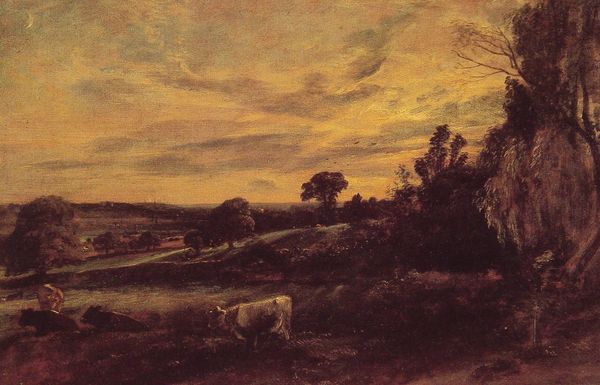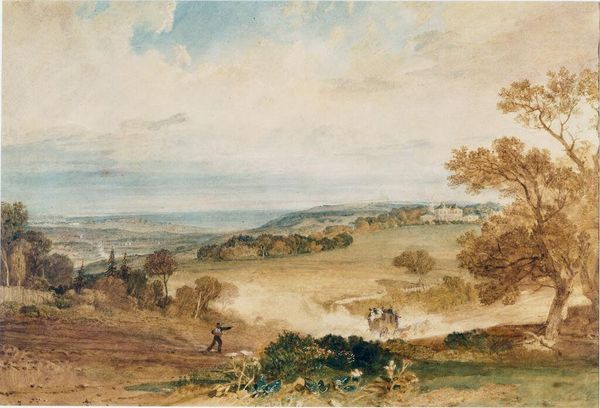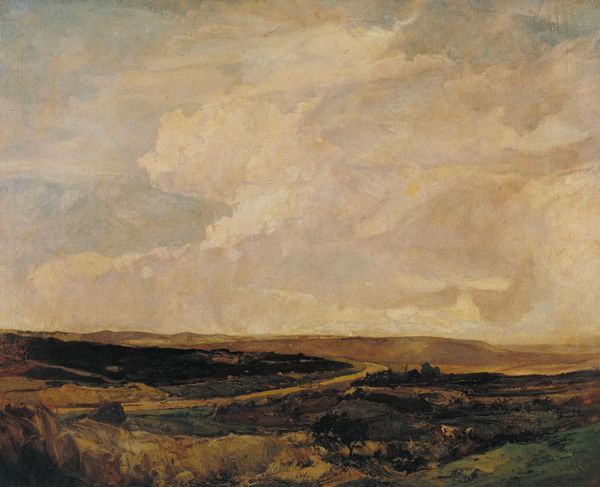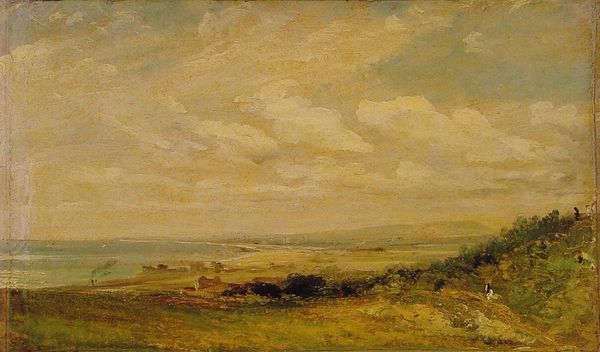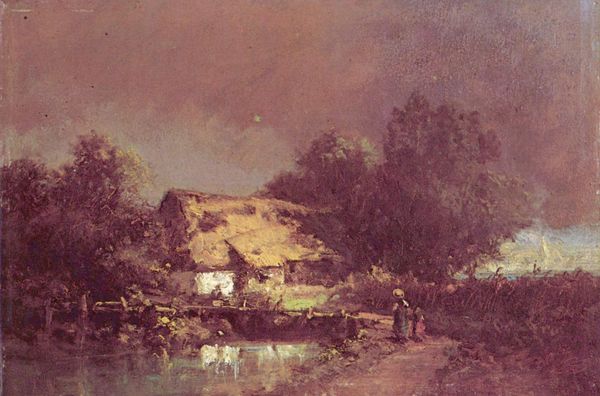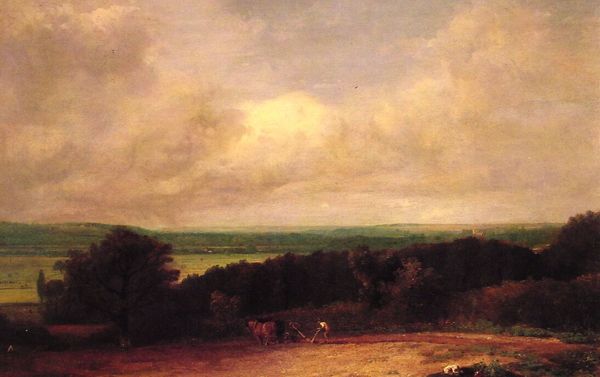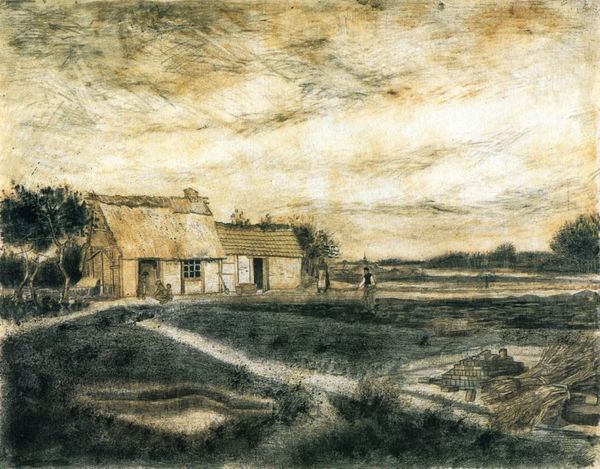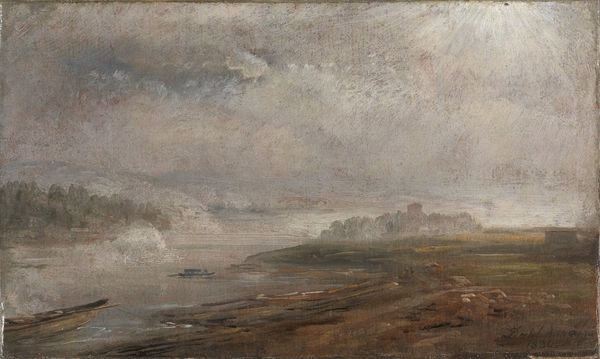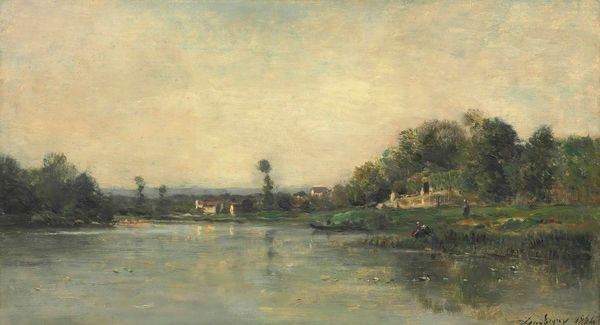
painting, plein-air, oil-paint
#
tree
#
sky
#
cliff
#
painting
#
plein-air
#
oil-paint
#
landscape
#
oil painting
#
rock
#
forest
#
romanticism
#
cloud
#
painting painterly
#
realism
Copyright: Public domain
Théodore Rousseau made this painting of the plain of Montmartre in France, most likely in the 1840s. It’s a landscape painting that invites us to reflect on the changing social and economic conditions of France during that time. The painting presents a vast, open field under a stormy sky. In the distance, we see the hill of Montmartre, topped with buildings. The scene is both beautiful and melancholic, capturing a moment of natural drama. But the painting is not just about nature. It also tells a story about the changing landscape of France as the country was undergoing rapid industrialization and urbanization. Rousseau was part of the Barbizon School, a group of artists who rejected the formal academic painting of the time and instead sought to paint nature as it truly was. To understand this painting more fully, we could explore how France's social and economic transformations influenced the art world. Old maps, photographs, political pamphlets, and economic data can help reveal the social meaning of this artwork. Ultimately, the meaning of this artwork is deeply rooted in its social and institutional context.
Comments
No comments
Be the first to comment and join the conversation on the ultimate creative platform.


